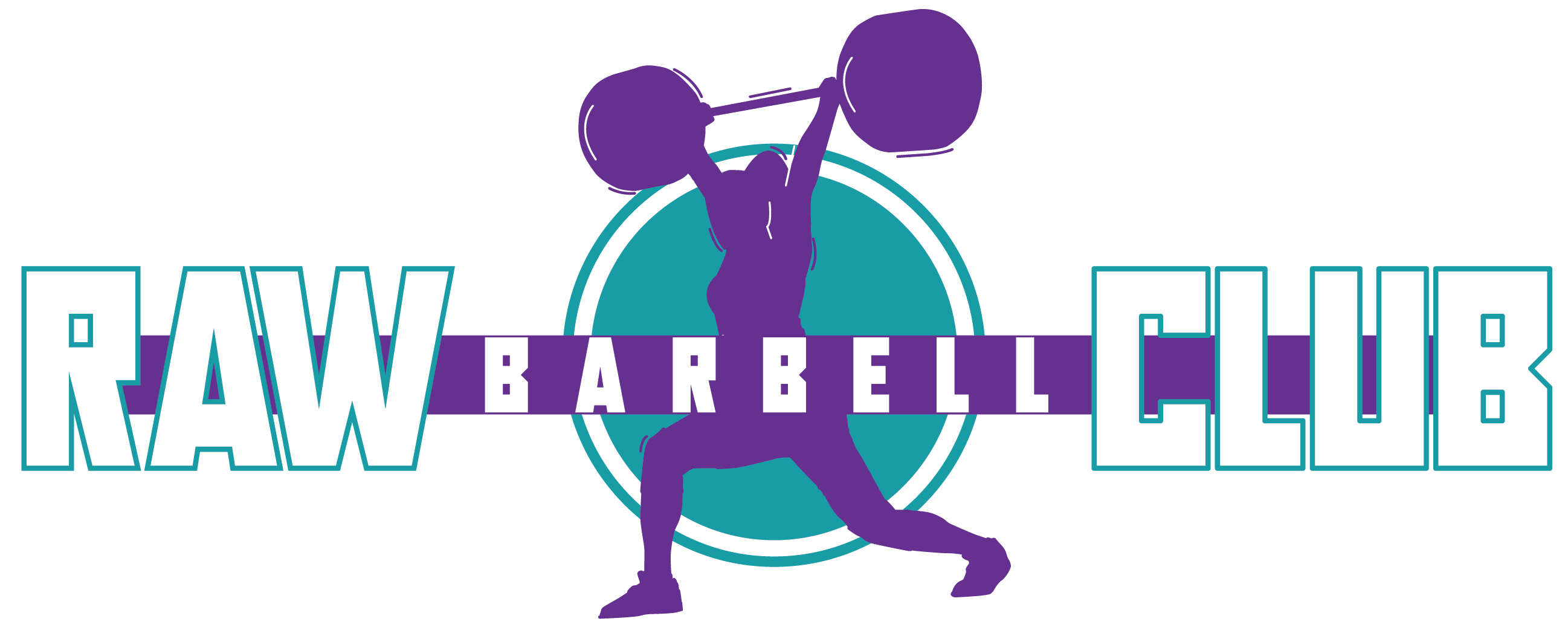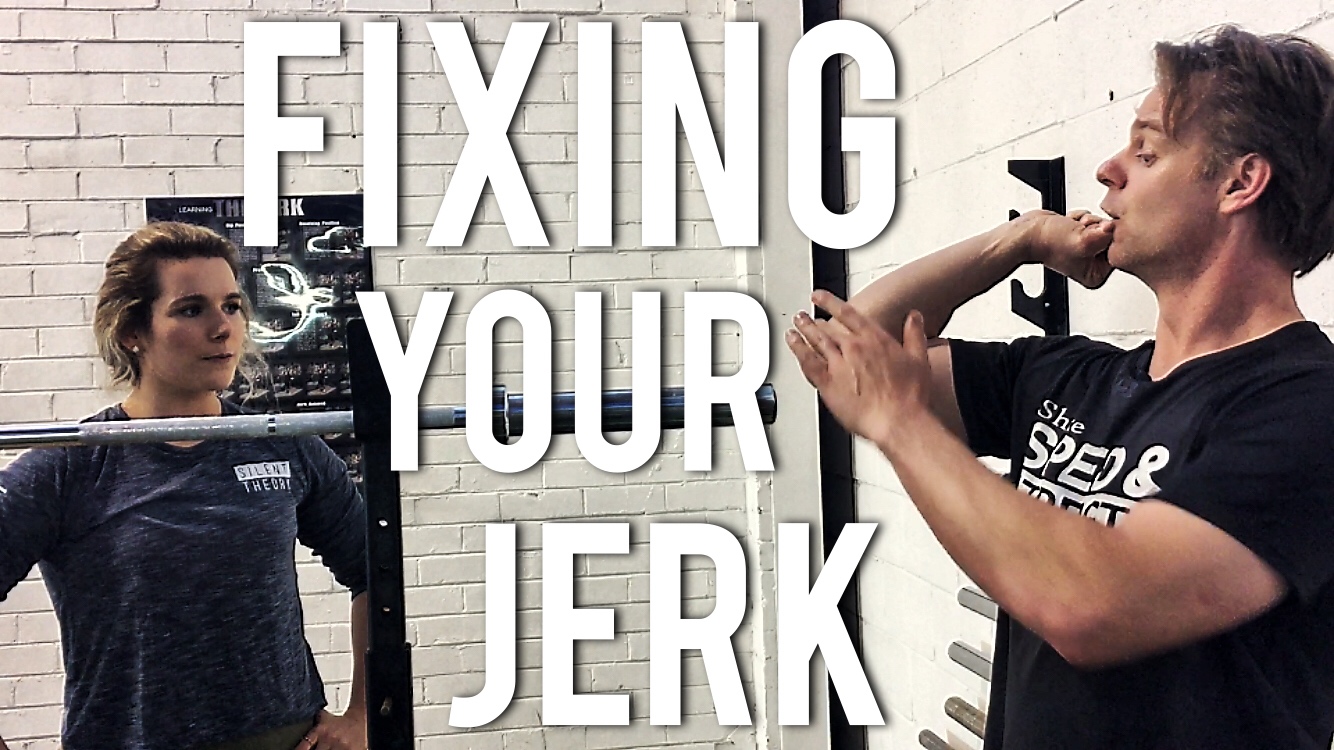SandBag TV Ep. #2
Diagnosing Problems in the Jerk
with Peter Upham (Shire Speed and Strength)
The jerk is always one of those things that can easily be under-coached and underdeveloped in many athletes. I know that I for one seem to spend a lot of time teaching the snatch and only marginally spend more time on the jerk than the clean. Most of the time lifters will develop little quirks that get the lifter from A to B.
The problem lies in that the jerk is actually quite technical with a whole lot of moving parts. Because of this people eventually reach a stand still in their progress. Their jerk is great up to a certain point and then suddenly falls of the rails as the weight get heavier.
A few weeks ago we sat down with Peter Upham from Shire Speed and Strength to record a podcast. Afterwards he was kind enough to grace us with some knowledge bombs. In particular how we can go about diagnosing problems in the jerk and how we can then go about fixing them.
Peter has a great track record coaching athletes from all sports
Normally in my quick tips videos. I try to point out and fix a problem I’m having in real time. There is an athlete in front of me doing something wrong, so we break it down right then and there and I try to pull the camera out during the process. That’s actually the reason why most videos aren’t the best of quality. They are just little snapshots of some drills, cues, and tid-bits we use day to day to get our athletes moving the way we want.
This time was a little different. We had Rhe as our volunteer model but we didn’t actually have any issue to solve. We had to kind of generalise and make up a problem to solve.
This turned into us asking Peter what are some common problems that seem to pop up everyday when he is coaching. So this episode isn’t really quick, but there are a lot of cool tips in there.
Thanks Peter for sharing your knowledge with us, and thanks Rhe for being our model!
Please enjoy Peter’s take on proper jerk mechanics. Let us know what you think and comment below if you have any questions or queries.
SandBag TV Ep. #2 | Diagnosing Problems in the Jerk
with Peter Upham
The Jerk
In the video Peter starts by explaining that the most common issue he sees with the jerk aren’t don’t stem from poor footwork but actually poor movement in the dip. Bad mobility and front rack issues can cause this, but often it’s caused by how the knee and hip joint behave as the athlete dips. The athlete can sit back in the dip, which causes the body to lean forwards. This makes it more difficult to propel the bar upwards. To simplify our diagnosis the easiest thing to do is to monitor the athlete perform a fronts squat followed by a push press. These are as close to a clean and jerk we can get without introducing even more variables into the equation. The athlete doesn’t need to worry about the footwork, clean, or catch and we can actually work up to some reasonable heavy loads.
Front Rack
The first thing we tack is the front rack. What we are looking for is a great deal of contact between the bar and the athlete. Too little and we make have some mobility or flexibility issues. Things that can pop up are a lack of external rotation in the shoulder or even just weak shoulder protraction. Once this is out of the way we can look at the dip itself. Play with elbow positions (high vs. low elbow) and go from there.
Elbow positions are going to vary depending on your anthropometrics. But as a ‘quick tip’ we’ve found a lower elbow easier for those with a shorter dip and a high elbow for those with a deeper longer dip. (this isn’t iron clad, ak your coach if you are unsure or play with it yourself) one big questions we need to ask is whether you are missing reps as the weights get heavier due to the position of your elbow. By looking at you building up weight in this complex we can check that!
This is also going to be an excellent time to practice bracing and breathing strategies. In particular breathing sequencing for your jerks.
Dip Mechanics
The next step is to introduce the actual jerk. We change the complex to a front squat followed now by a jerk. What we are now looking for is the differences between end of our front squat rep and the start of our jerk dip.
If you are dipping to far, and a leaning forwards we can teach new cues, such as leaning back, with ‘tight glutes’. This cue can produce the immediate affect of straightening up bar path.
Sometimes however it need to be paired with ‘tight core’ to mange an athletes desire to lumbar lordose or move into a hyper-extended back position.
Again all of these cues and tips will help or hurt different athletes depending on how you are built and how you actually jerk.
The key is to break it down to the essentials, install skills one by one, and get to know your own body and your own technique!
Good Luck!!
Andy
P.S. This post could not have been possible without Peter Upham from Shire Speed and Strength. If you are local or close to Caringbah or have some serious drive to be better at your sport. check them out below! They know what they are doing.
Please Check out Shire Speed and Strength
SSS Website
SSS Instagram
SSS Facebook
Follow RAW Barbell Club on Social Media
[mailmunch-form id=”415919″]

